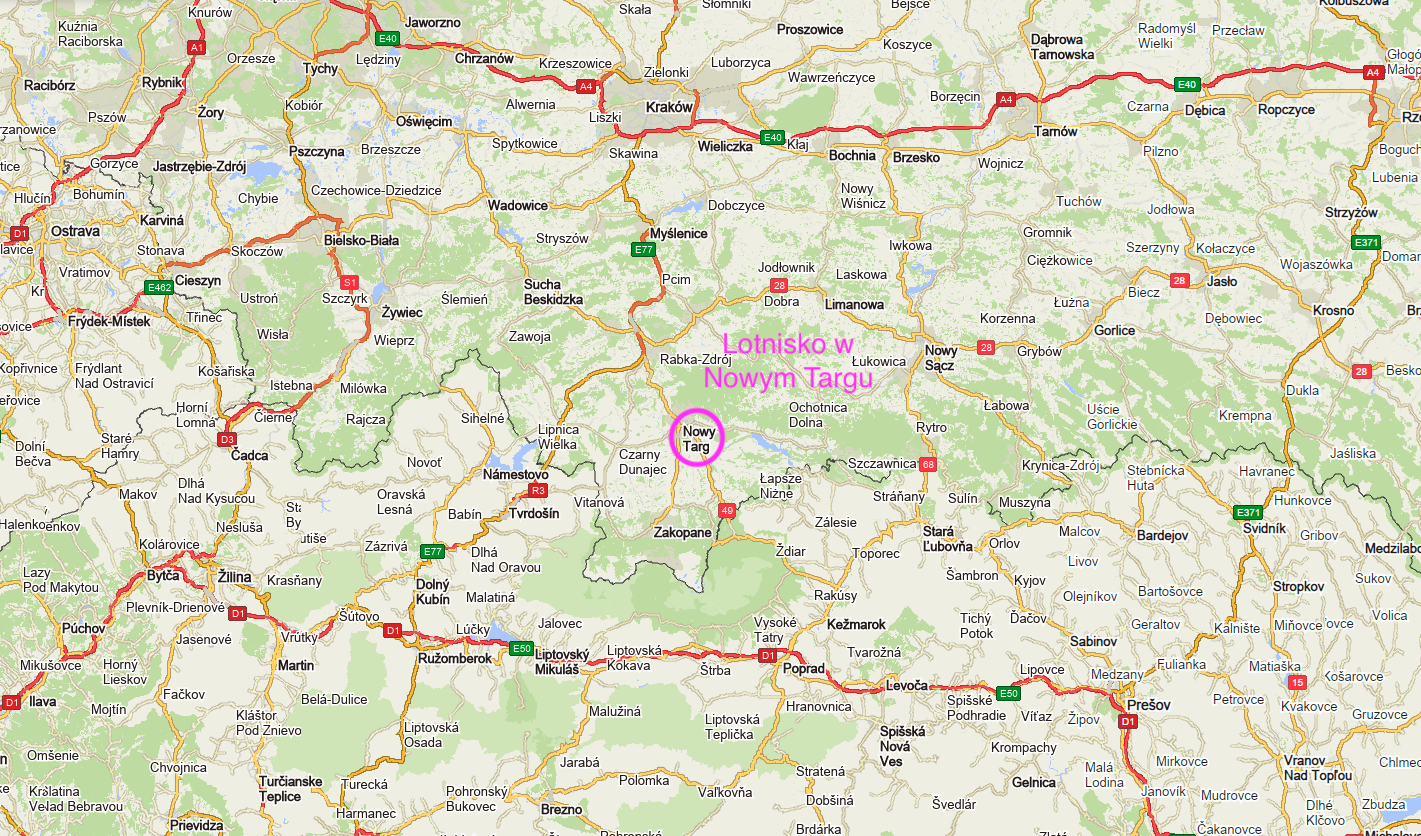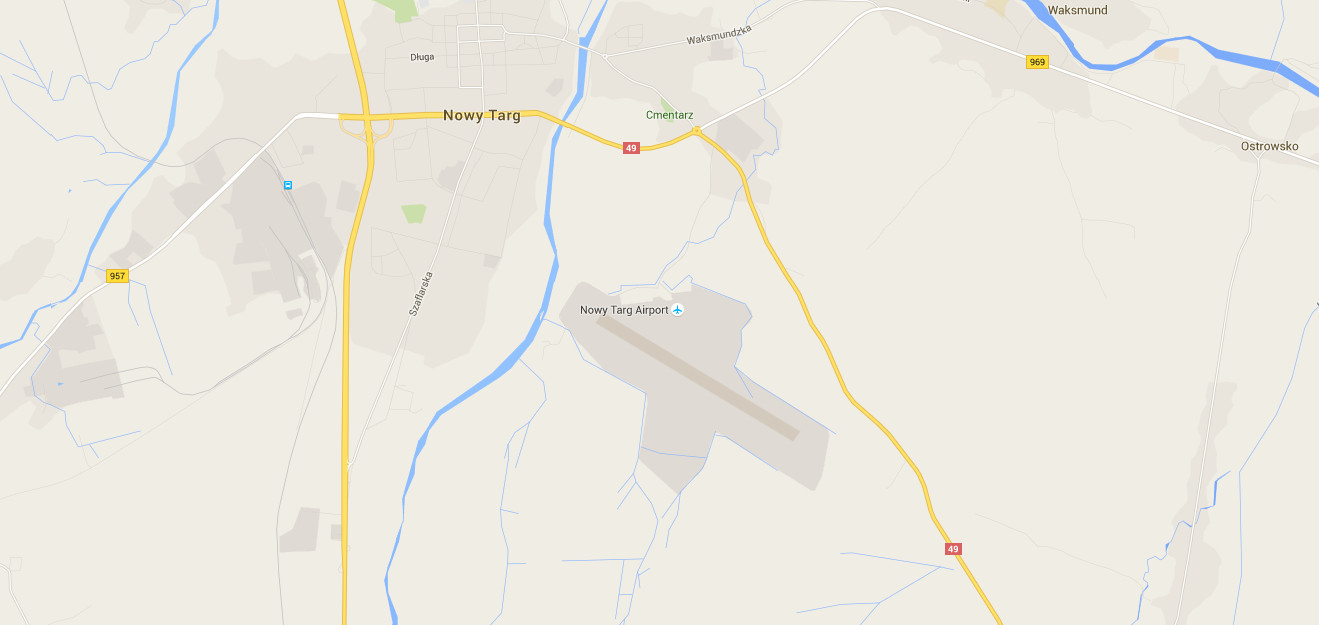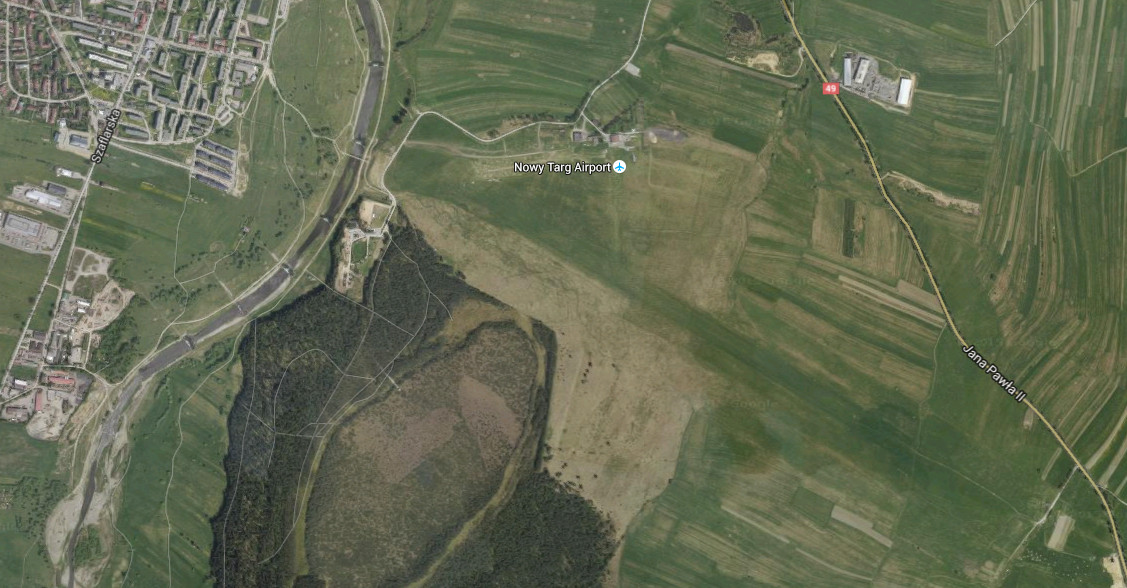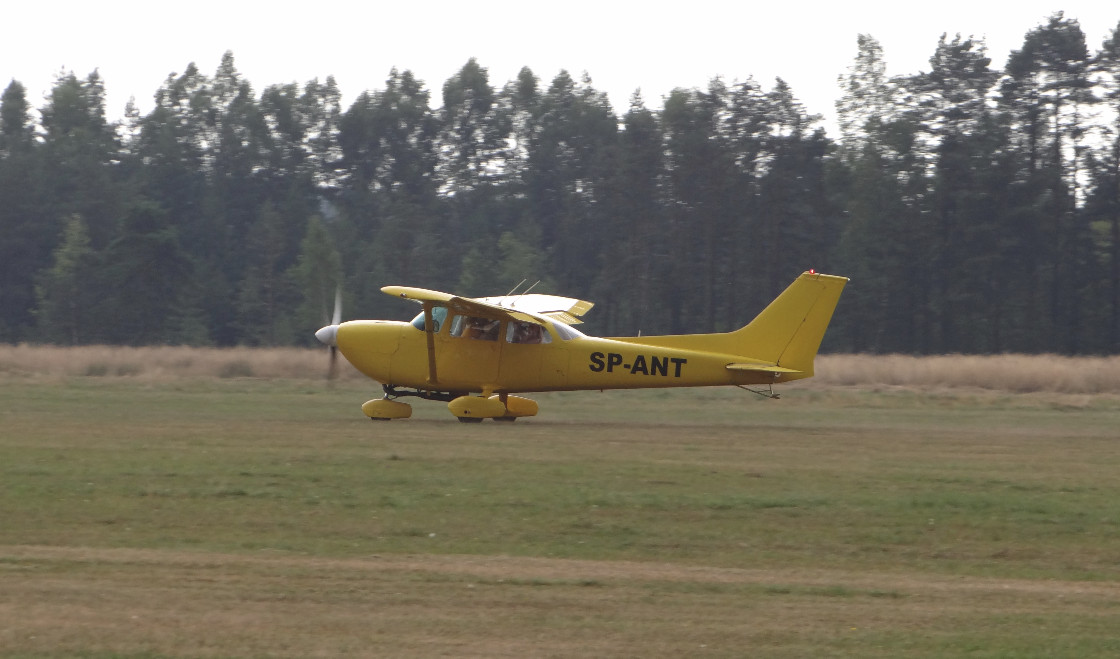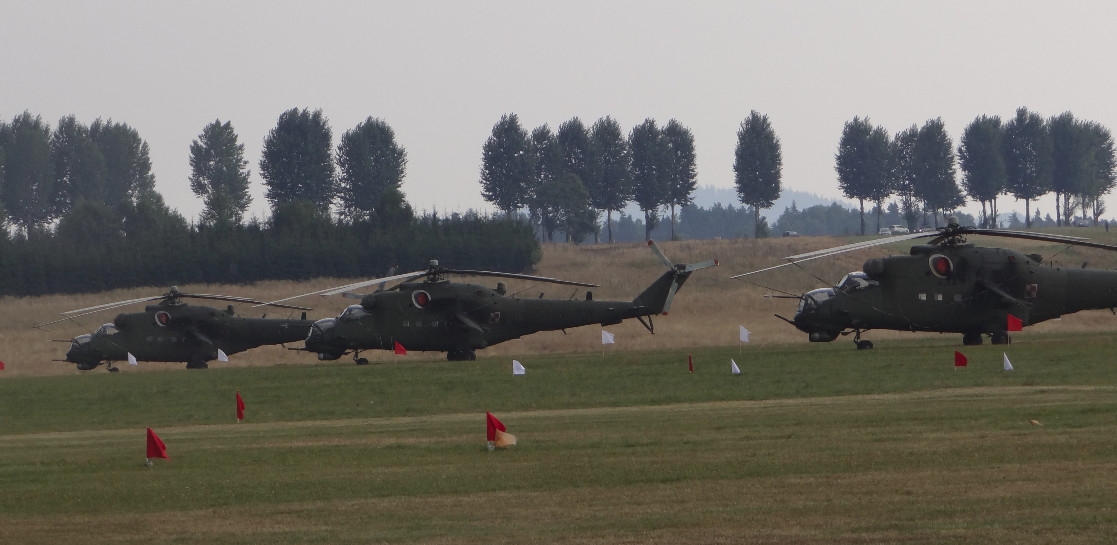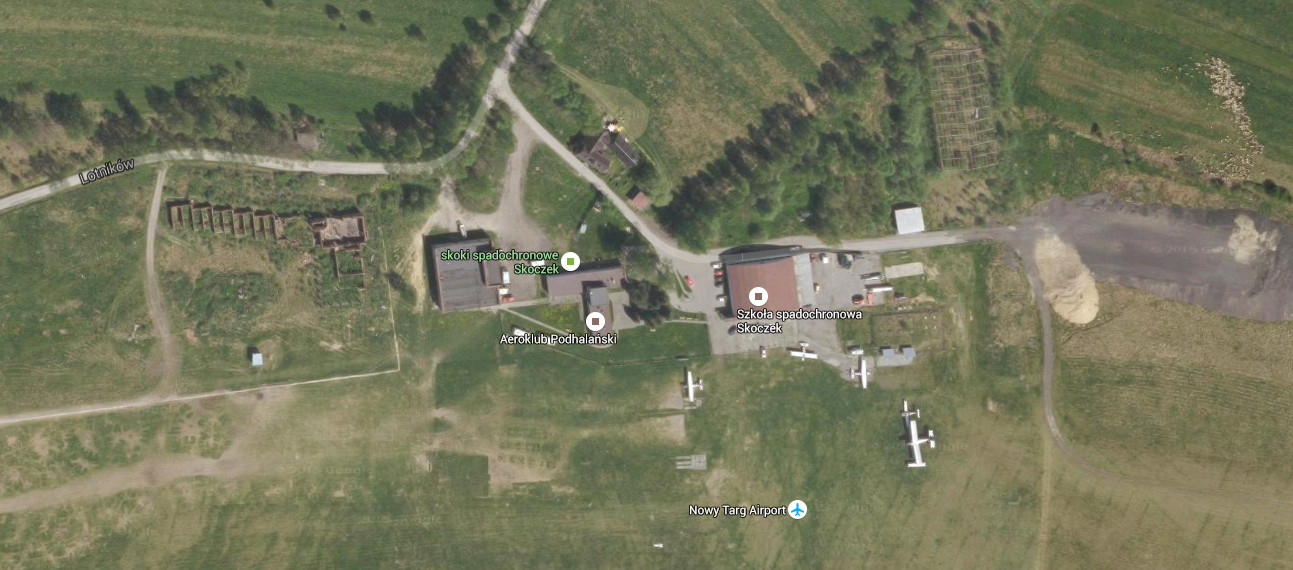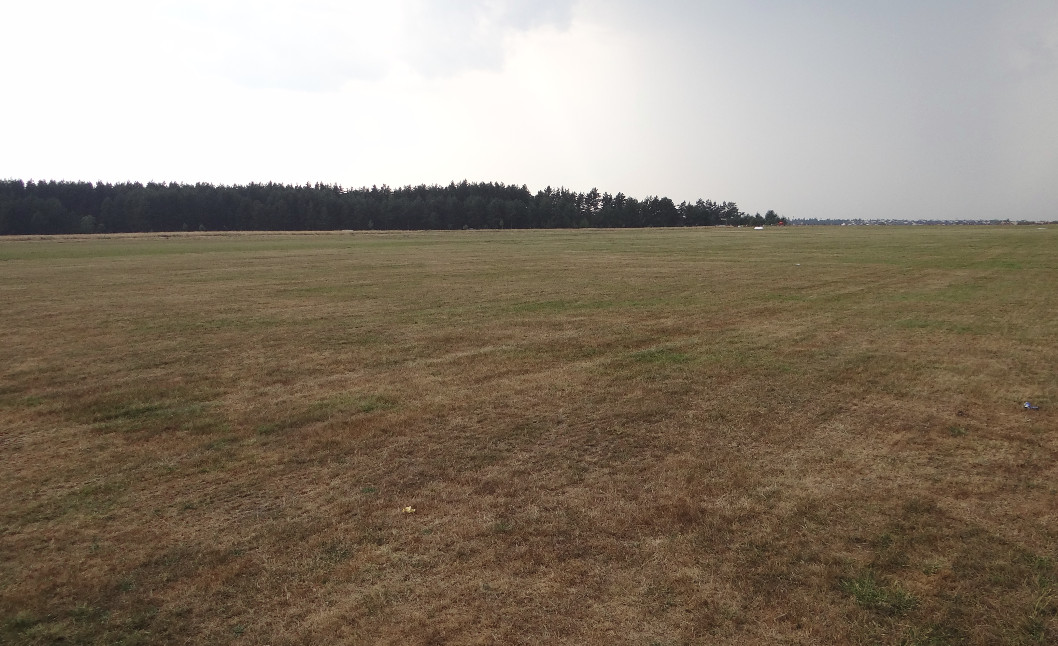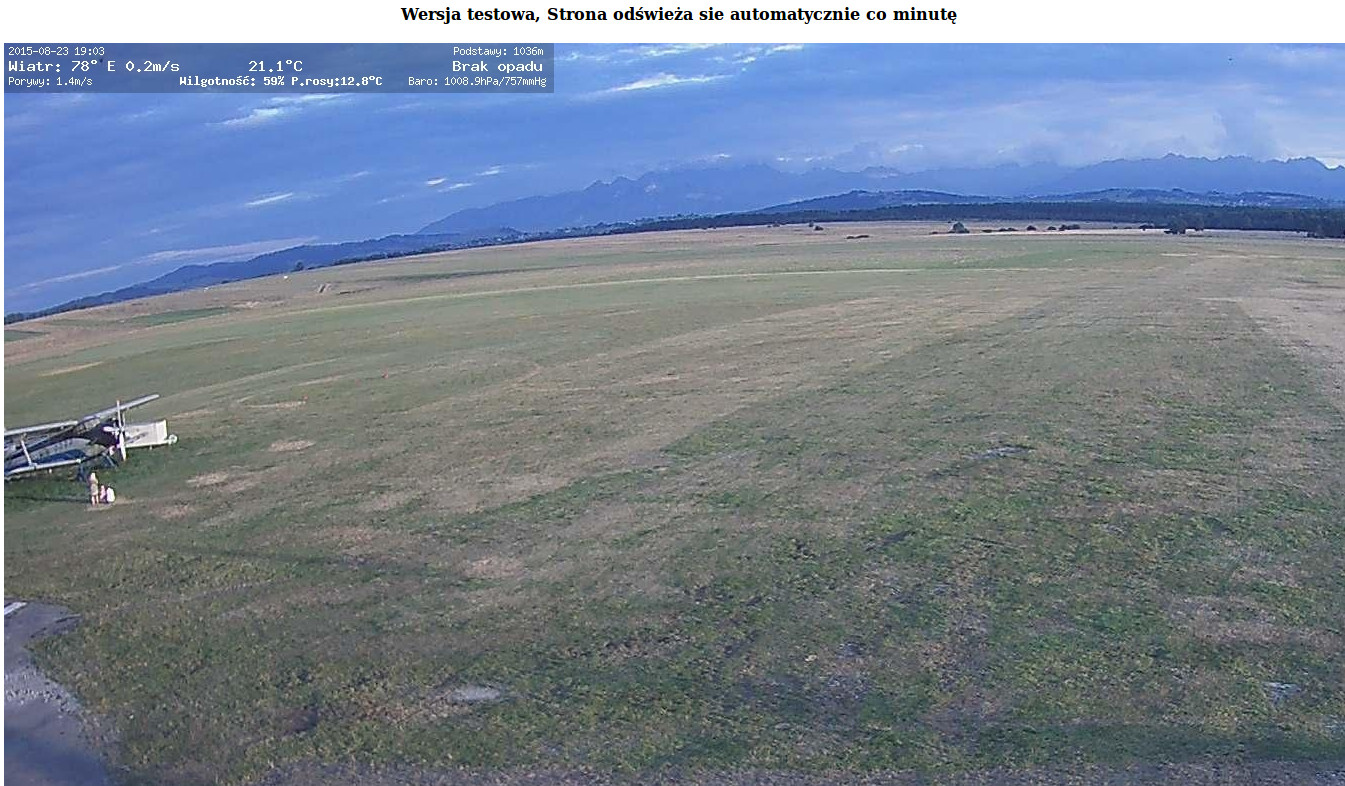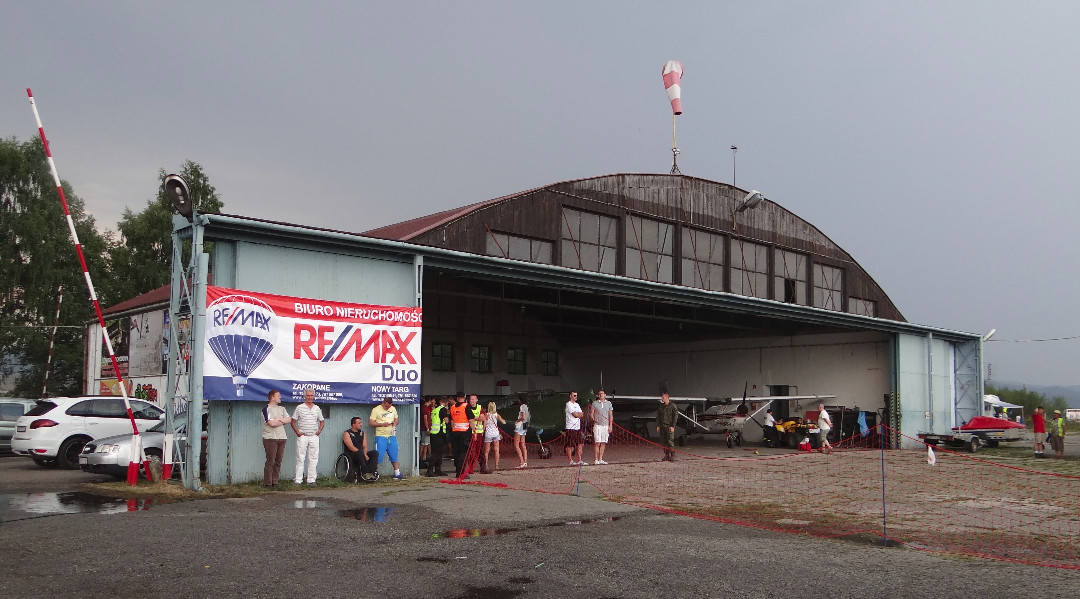Kraków 2015-08-23
Nowy Targ airport. Nowotarski Aero Club.
Nowy Targ airport.
The airport in Nowy Targ belongs to a sports type airport. Its host is Aeroklub Nowy Targ (Nowotarski). Sections operate here; modeling, parachute, glider and airplane.
Description of the photo: Cessna 172 SP-ANT registration called "Kanarek" starts in Nowy Targ. The plane of the Nowotarski Aeroclub is intended for sightseeing flights. Such a registration was carried by the An-2 aircraft used many years ago by the Polish Army and the Polish Aero Club.
History of the City of Nowy Targ.
The beginnings of settlement in Podhale date back to the 13th century. It was then that the Cistercians came from Jędrzejów and founded a monastery in Ludźmierz. They were given the right to establish new settlements in Podhale. The settlements stood on the trade route from Silesia to Hungary. At that time, Nowy Targ was built, which at that time was called Novum Forum. It was founded under Western European law. The parish already existed here in 1326. Casimir the Great took over Podhale from the Cistercians and thus it became royal. It was then that it was decided to move the settlement to better ground and Casimir the Great again granted the city the privilege of location (June 22, 1346). In this way, a new town was created with a market square and the parish church of St. Catherine. Nowy Targ received many royal privileges, which favored its development. Trade and crafts flourished. With royal permission, each year, on November 25 in St. Catherine, a huge fair was held. The fair lasted eight days. In 1487, King Kazimierz Jagiellończyk allowed a second annual fair on July 25 in St. James, which also lasted eight days. After that, weekly fairs were allowed on Thursdays, which continue to this day. In 1521, king Zygmunt the Old allowed the town councilors to collect tolls with passing the roads of Podhale, in exchange for their hardening and keeping them in proper condition. Merchants who passed through Podhale were not allowed to avoid the city. In the 16th century, there were already guilds concentrated in the Guild of Various Crafts in Nowy Targ. However, most of them were furriers who later created their own guild. King Jan Kazimierz allowed the third big fair during the year; the first Sunday after Easter. In the fifteenth century, the city had about 500 inhabitants, and in the sixteenth century about 800 inhabitants. In 1601, the city was consumed by the first great fire. The fire burned down almost the entire city, including the church, hospital, town hall, and the manor. The taxes paid by the City were a significant item in the royal budget. While the townspeople and craftsmen in Nowy Targ were doing well, the peasants were much worse. Every now and then the starosts introduced new tributes and labor. Dissatisfied residents of Podhale sent complaints, won cases in court, and yet their financial situation continued to deteriorate. There were revolts and even attacks on the castle in Czorsztyn. However, they were bloodily suppressed. Nevertheless, the Podhale people took part in the uprising against the Swedes, who in 1656 plundered the city and murdered most of the inhabitants.
In 1772, the First Partition of Poland took place and the city passed under the Austrian administration. From the end of the 17th century, the slow decline of the city dates back. One of the causes was the subsequent fires; 1673, 1696, 1710, 1719, and 1784. There are also epidemics and persecution of the occupiers. Podhale was incorporated into Galicia under Austrian administration. The property of the starosty was confiscated and privatized. Although the Austrian authorities retained the privileges of Nowy Targ, the city had to pay high tributes to the occupant and provide a recruit. After the last great fire (1784), the city was rebuilt on a new street plan, without taking into account the former buildings and the arrangement of plots. The market has been significantly enlarged. In 1840, the city had already 2,000 inhabitants. After the Spring of Nations, serfdom was abolished in Podhale. Later, Galicia was granted autonomy, and Nowy Targ became the seat of the poviat and the court. At the end of the 19th century, Nowy Targ had a school, mills, sawmills, a brewery, a power plant and many craftsmen’s factories. Since 1881, there has been a fire brigade, known then as the fire brigade. The brick town hall was built in 1884 and remains in that condition until the present day. In 1899, the Chabówka-Zakopane railway line was commissioned. The education system and the Sokół Gymnastic Society developed. Before the Great World War, Nowy Targ had 9,000 inhabitants.
During the Great World War, the inhabitants of Podhale fought on the side of the Austrians. It was due to the roots of most recruits. At the end of 1914, the mosquitoes were defeated at Limanowa, and then at Gorlice (May 1915) and withdrew to the east. On the night of October 31 / November 1, 1918, Nowy Targ was taken over by the Polish Army. Civilians and junior high school students took part in the fighting.
In the Second Polish Republic, the city developed systematically. New important objects were built; a brickyard, another sawmill, and in 1930, an airport.
After the aggression of the German army, Nowy Targ was seized by the new invader on September 1, 1939, around 4:30 p.m. without a fight, entering from Slovakia. During the occupation, the entire Podhale region became one great point of resistance. It was from the people of Podhale that the couriers, liaison officers and guides between the occupied Republic of Poland (the Underground State) and the Government in exile in London came from. The Germans started a Germanization campaign in Podhale, trying to prove that the highlanders came from the Goths, just like the German race. However, a small percentage of the Podhale population went to cooperate. In 1941, a large network of fighting against the occupant was already operating in Nowy Targ. Underground magazines were published, even in German. However, in 1942, the mesh was broken. Many people lost their lives in quick executions or ended up in extermination camps ("monuments to German civilization"). Some members of the network fled, including Józef Kuraś "Fire". On January 29, 1945, the city was seized by the Russians, who were shown the way by the "Ognia" unit. The Germans were so surprised that they fled in panic without a fight.
In the new reality, the communists took power. Józef Kuraś "Ogień" was to be the head of the UB (poviat public security office). He was supposed to report to the Krakow UB, but he turned back and returned "to the forest". Communist symbols were erected in Nowy Targ; Lenin’s museum, monument to Russian soldiers (twice blown up). It was not until 1951 that the church was completed, the construction of which began in the Second Polish Republic. In 1955, the Nowotarskie Zakłady Przemysłu Leatherowego "Podhale", which employed 10,000 workers in its heyday, was launched. New housing estates were built. In 1979, Saint John Paul II the Great celebrated Mass at the airport. In 1979, construction began on a new hospital and was completed in 2008.
The history of the airport in Nowy Targ.
In the nineteenth century, the area where the airport is located belonged to the City of Nowy Targ and was managed by city councilors. In the 1880s, with the consent of city councilors, the area of 8 plots with an area of about 165 morgas (1 morga is 0.5598 hectares) was leased to the Austrian army for the purpose of establishing an artillery training ground. The training ground was established as a training ground for artillery troops of the Krakow Fortress and the Przemyśl Fortress. At the beginning of the 20th century, a new temple was built in Nowy Targ for the money from the lease paid by the army. Over time, a protective strip of land with an area of over 200 morgens was built around the training ground, for which the army paid compensation for obstructing the use of these areas. For the needs of the shooting range, several barracks were erected as warehouses for equipment, food and ammunition. The soldiers slept in private quarters or in tents. The hardship of the training ground for the city had to be great, because the heaviest guns at the disposal of the Austrian army were used in the training ground. Nevertheless, the opinions of the residents about the presence of soldiers in Nowy Targ were very divergent. From very positive, manifested in the desire to create a garrison in Nowy Targ (barracks, casino, warehouses, stables and coach houses, etc.), to decidedly hostile (for the army to completely leave Podhale). However, this discussion turned out to be pointless as the Great World War broke out. During the war, more brick buildings were erected, the ruins of which can be seen. Exercises were still being conducted here.
In 1918, the Republic of Poland regained independence, Poles took over military facilities, barracks, warehouses, airports, etc. in Nowy Targ as well. Polish soldiers and legionnaires took over the training ground and warehouses in Nowy Targ. These facilities became the basis for the formation of the 1st Mountain Artillery Regiment, which took part in the war with Bolshevik Russia. As a result of the reorganization of the Polish Army in 1926, the garrison in Nowy Targ was liquidated. The land and facilities were handed over to Nowy Targ councilors.
From the beginning of its development, the airport concerned areas that were characterized by particularly difficult terrain and weather conditions. These are unique, demanding and dangerous areas, and at the same time they bring measurable benefits and provide additional strong impressions. Therefore, in the Second Republic of Poland, airports known to date were established in; Aleksandrowice near Bielsko Biała, Międzybrodzie Żywiecki near Żywiec, and finally in Nowy Targ. The Carpathian range has created very favorable thermal conditions for aviators, especially gliders, for practicing this type of sport, as well as for improving already acquired skills. Our mountains, the Tatra Mountains, are a small mountain range that is part of the Carpathian Mountains, of an alpine type. Therefore, they give even greater requirements for pilotage.
Before the Tatra Mountains were visited by airmen piloting planes, free balloons appeared here. On June 23, 1905, the crew of the "Venus" balloon, composed of lieutenants Z. Zarub and L. Parethauer from the Balloon Division at the 2nd Fortress Artillery Regiment stationed in the Krakow Fortress, happily crossed the Tatra Mountains. The start took place at 11.00 am from the training ground near Nowy Targ. The balloon rose to a height of about 2,500 m and was pushed by the north-easterly wind. The landing took place 4 km from Biała Spiska in Slovakia, around 1:30 p.m. There were also other balloon flights, but poorly documented. On the other hand, the unfinished attempt to rise the stratospheric balloon "Gwiazda Polski" from 1938, the attempt of which was thwarted by the outbreak of World War II, is well known.
After the military training ground was closed down in 1926, city councilors were wondering what purposes the recovered area should be used for. It was the time of the "May Coup" in which aviation took an active part. Aviation was gaining importance, especially in the field of mail transport. It is assumed that Nowy Targ Airport was established in 1930. The initiation was the decision of the County Committee of the Anti-Aircraft and Anti-Gas Defense League to create the first Tourist Airport in the Republic of Poland. He financially supported the Provincial Committee.
When in 1934 Zakopane was cut off from the rest of the country by a great flood, the only way of communication was by air. A makeshift landing field was set up on Lipki. Airplanes delivered medicines and mail. They flew from the Rakowice-Czyżyny Airport or from Nowy Targ. The airport in Nowy Targ also had to be an alternate airport when the weather conditions in Zakopane suddenly worsened.
Since 1957, the Military Fitness Center has been operating in Gronik, where fitness training for military aviators is conducted. It is worth mentioning here about helicopters in the Tatra Mountains, although this is a topic for a separate article. In 1963, the first successful rescue operation was carried out in Tarty, carried out by the SM-1 helicopter piloted by Tadeusz Augustyniak. Later, the Mi-2 appeared in the mountains, and since 1992, PZL Sokół. In 1975, a helipad was created next to the hospital in Zakopane, and since then, helicopters can be found constantly in the mountains.
At the beginning of the 70s, the Polish Army asked for the possibility of flying in the mountains. Due to the lack of appropriate legal regulations, the case was based on the highest party authorities. From 1975, the Tatra Aero Club in Nowy Targ became a training ground for helicopter units of the Polish Army. The first exercises took place in the summer of 1975 with the participation of Mi-2 and Mi-8 helicopters. In addition to the flights in the mountains, the crews made landings at the peaks and in the valleys. This is how the military history of Nowy Targ Airport began. Every year, and sometimes several times a year, the Polish Air Force conducts exercises here. The crews of the Mi-2, Mi-4, Mi-8, Mi-24 and PZL-Sokół helicopters were training here. They have been and are doing day and night flights. Solo and team flights. They practice landings in valleys and on small flat peaks. The training also includes simulated attacks on ground targets. In Podhale and in the high mountains themselves, soldiers do not use live ammunition.
In 1957, the Aero Club Tatrzański was established at the airport, which in 2001 changed its name to Aeroklub Nowy Targ. Currently, there are four sections in the aero club: model making, glider, airplane and balloon. The Aero Club specializes in organizing sightseeing flights with airplanes, gliders and hot air balloons. The flying club has the appropriate certificates. In 2013, the aero club obtained the AOC certificate in the field of passenger transport. For seven years, Aeroklub Nowotarski has been the organizer of the Nowy Targ Aviation Picnic, i.e. the regional Air Show.
St. John Paul II Great.
Visit of Pope St. John Paul II in Nowy Targ was connected with the first pilgrimage of His Holiness to his homeland. Nowy Targ was on the route of the first pilgrimage. The Pope, remaining faithful to the cry "Totus Tuus – All Yours", wanted to visit the Marian shrine in Ludźmierz. The communist authorities did not consent to it, fearing the excessive growth of the cult of Ludźmierz. The compromise reached by the state and church authorities included a visit to Nowy Targ and a Holy Mass at the airport. On June 8, 1979, at the airport, the Pope celebrated a mass attended by over 1,000,000 faithful from Poland, Slovakia and Hungary (according to the Church’s data). Initially, the communist authorities avoided specifying the number of participants, and later significantly underestimated this number. Karol Wojtyła, the later Pope, was a great lover of tourism and the beauty of mountain nature. Currently, in Nowy Targ, in the Podhale Museum, there is an exhibition devoted to St. John Paul II. On the other hand, at 160 Szaflarska Street, there is the Church of St. John Paul II, where there are relics of the saint, the greatest of the Polish family. At the Nowy Targ airport there is a statue of St. John Paul II the Great, which was unveiled in 2001, on the 22nd anniversary of the Pope’s visit and Holy Mass in Nowy Targ. The monument was funded by Marzena and Grzegorz Handzel, who live in Chicago. The monument was consecrated by Cardinal Franciszek Macharski.
Infrastructure of the Nowy Targ airport.
The airport is located south-east of Nowy Targ. In a straight line, about 3 km from the city center. Convenient access to the airport is provided by the National Road No. 49 (Nowy Targ – border crossing in Jurgów), and then the asphalt, narrow Lotników Street leading to the airport itself. The airport is surrounded by arable fields and on the south-west side by forest. The Biały Dunajec River flows from the west near the airport. The shape of the airport area resembles a cross, which helps to maintain two crossing RWYs. The area has a maximum length of approximately 1 700 m and a maximum width of 800 m. The total area is approximately 125 hectares.
The main building complex is located in the northern part. At present, it consists of one hangar and two large buildings. The brick and steel hangar has about 30 mx 40 m at the base. The roof is arched, gable. The door to the hangar is closed with six sliding leaves. The main administration building is a single-storey T-shaped building with an additional central superstructure (kiosk). The third structure is a large, single-story building the size of a hangar. It has a superstructure in one part. Its base is approximately 30 m x 30 m. At the moment (2015) the facility is for rent. Right next to it, on the west side, there are ruins of an object, which is probably the remains of the artillery training ground here. On the eastern side, near the hangar, there is a steel skeleton, which is a remnant of a large hall. Its base is approximately 80 m x 25 m. There is a petrol station near the hangar. Between the hangar and the administration building there is a statue of St. John Paul II the Great.
Nowy Targ Airport data.
Host: Aeroklub Nowy Trag or Aeroklub Nowotarski, Aeroklub Tatrzański (such an inscription appears on the hangar). Designation: EPNT. Coordinates: N49 ° 27’46.2 "E20 ° 03’02.4". Elevation: 2,060 ft, 627 m above sea level. Purpose: Mainly sports and recreational. Radio: Nowy Targ-Radio 122.3 and 122.7 MHz. Telephone: +48 182646616. Address: ul. Lotników 1, 34-400 Nowy Targ.
RWY: Only with a dirt surface (grass), direction 122/302 (12/30), dimensions 1 680 x 120 m, coordinates N49 ° 27’46.2 "E20 ° 03’02.4" ". Second RWY direction 095/275 (09/27 ), length 750 m, coordinates N49 ° 27’55.0 "E20 ° 02’51.1".
The airport offers aviation fuel. Interestingly, it is the cheapest fuel offered at Polish Airports; PLN 6.75 per liter of aviation fuel AVGAS 100 LL (as of 4 August 2015). Fuel for JET A-1 turbine engines is not offered at the airport. Petrol station service phone: + 48 730307837.
Written by Karol Placha Hetman

